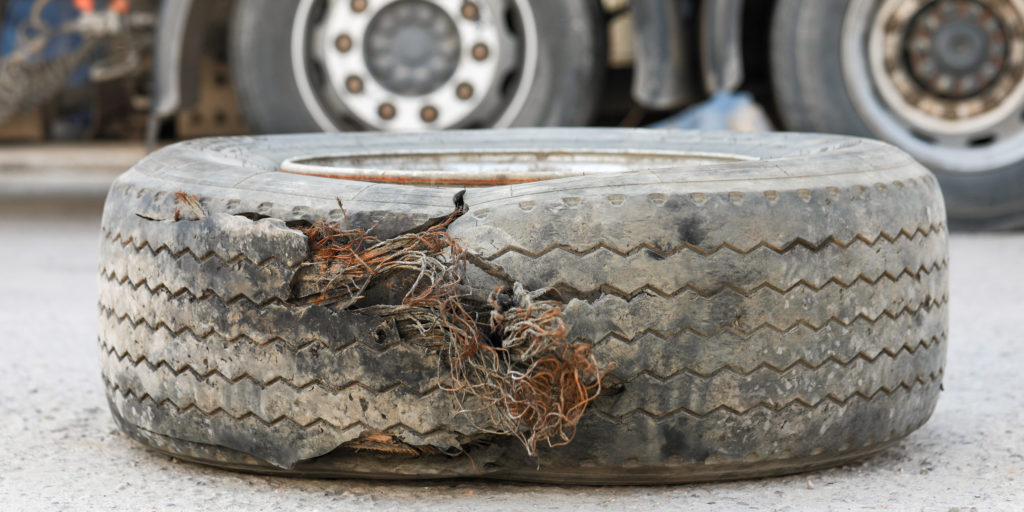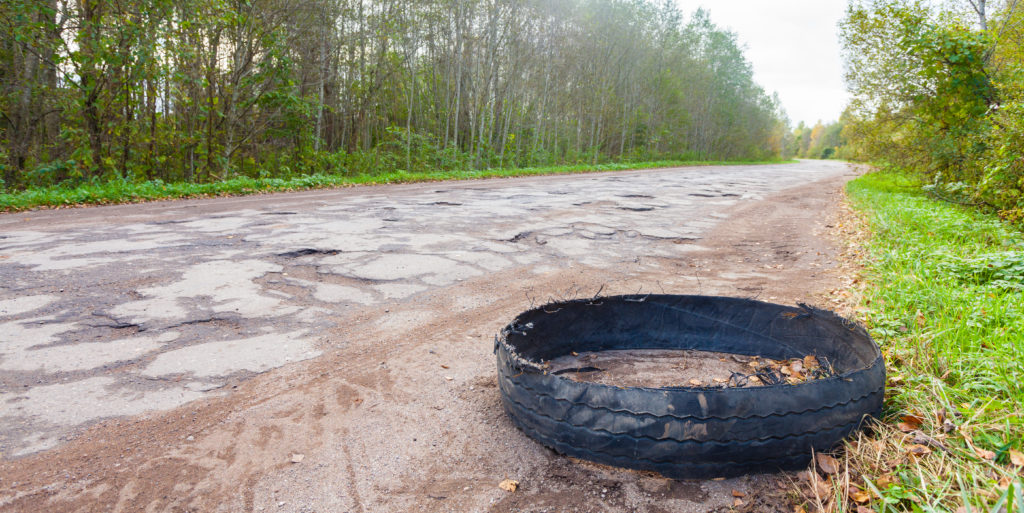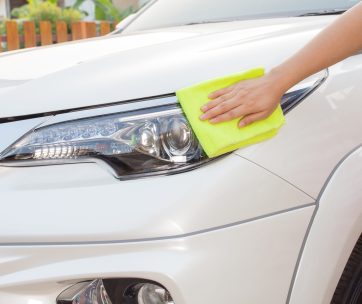BY Nick Bulanda
Published December 1, 2018

The Symptoms of Bad Tires
Bad tires are absolutely horrible and can ruin your day. All it takes is one bad tire to derail your entire day. Next thing you know, you are late for dinner or work. Furthermore, you have to pay for brand new tires on the spot. This prevents you from finding a good deal on new tires. Instead, read all of the information below on the symptoms of bad tires. Then, keep an eye out for any of these signs in your tires. If you notice one of these five problems, get some new tires!
Penny Test & Treadwear
The easiest way to notice any symptoms of bad tires is through a penny test. Put the penny into the tire tread, Lincoln’s head first. Test several grooves to get the best results. If you notice the top of Lincoln’s head, then you need new tires. If you can only notice part of Lincoln’s head, then you are fine and do not need new tires. While this may seem silly to some, Firestone tires recommend this test. It is a good way for novice drivers with no automotive experience to save money, time, and effort!
Now, if you know a lot about tires then give it an eye test. Modern tires usually have a tread-wear indicator bar across the tread. That way, you notice a reduced level of tread. However, if you have older ties then use the aforementioned penny test. Treadwear is key as it provides traction and stability out on the open road. Look out for any tread problems while you check for symptoms of bad tires.
Sidewall Damage
Off-road tires and mud tires come with enhanced sidewall protection. After all, cuts and cracks in the sidewall do real damage to a tire. Luckily, this is one of the more obvious symptoms of bad tires. However, anyone that sees this damage needs new tires immediately. Cracks in the sidewall usually result in air leaks. Leaking air deflates the tires over time. This decreases handling, fuel economy, and more. Pay attention to the sidewall of your tires at all times.
Buldges, Blisters, & Deformities
Another one of the more visible symptoms of bad tires comes in the form of bulges and blisters. You do not need to be a mechanic to spot these blisters. Instead, literally, anyone and everyone can see a bulge in their tire. It is going to be right on the sidewall and it looks weird. If you see these blisters then do not waste any time. Replace your tires as soon as possible. If not, then these weak spots are going to cause a serious failure.
Vibrations
According to consumer reports, one of the symptoms of bad tires involves car vibration. First and foremost, this could potentially signal a wheel problem. Misaligned wheels or bent wheels shake and vibrate on the open road. More often than not, rims bend after a huge pothole hit. If your car is shaking way too much then visit a local shop and see a mechanic. Let their staff evaluate the rims and then take the proper steps towards a better rim and tire. If not, then you could end up in serious trouble out on the open road.

Last Words On Symptoms Of Bad Tires & Maintaining Good Tires
The easiest way to avoid buying new tires is to take care of your current tires. Rotations and inflations are so simple to manage and track. Experts recommend a tire rotation every six months or 6,000 to 8,000 miles. Furthermore, always track and manage your tire inflation levels. Overinflated tires can wear out tread quickly. On the other hand, underinflated tires are dangerous and can burst upon impact. Plus, underinflated tires do not grip surfaces well and lower the fuel economy of your vehicle. Proper inflation is so essential to maintaining healthy tires. Also, you can save yourself money in the long run as well!
Do not end up stranded on the side of the road. Do not ignore the symptoms of bad tires during daily driving. If you notice anything odd or irregular, look into it further. Then, take time to seek out help from a mechanic or local tire store. Look back over this list of telling signs that you have bad tires. Take care of your vehicle’s tires and keep yourself safe out on the open road. If you need to replace your tires, check our guide on tires.


